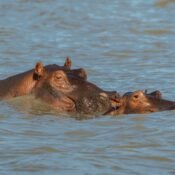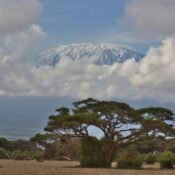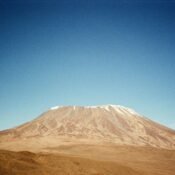
Tanzania’s Waterfalls: A Guide to Natural Wonder
Tanzania is known for its huge savannas, high mountains, and rich wildlife. It also boasts incredible waterfalls, which add another layer of beauty to its diverse landscapes. These waterfalls are dispersed all over the country. They are breathtaking natural attractions and important resources that support local economies, provide hydroelectric power, and support nearby ecosystems. In this guide, we will talk about some of the waterfalls in Tanzania, their ecological significance and their role in local communities.
Materuni Waterfalls
- Location: Materuni waterfall in Tanzania is situated near the village of Materuni which is outside Moshi town.
- Highlights: It is one of the tallest waterfalls near Kilimanjaro, standing at a height of 90m.The waterfall is surrounded by rich green hills and coffee farms
- Tourism: The Materuni Waterfalls is a famous tourist place for people looking for natural and cultural experiences. The place also offers a guided tour in which you also get to visit the nearby coffee plantation, where you will witness the traditional process of coffee making.
- Ecological Significance: The waterfalls maintain a rich ecosystem of flora and fauna which play a role in preserving the local biodiversity. The haze coming from the waterfall makes a wet environment which supports unique plant species, additionally increasing the ecological diversity of the region.
Sanje Falls (Udzungwa Mountains)
- Location: Sanje Waterfalls Tanzania is located within the Udzungwa Mountains National Park in southern Tanzania.
- Highlights: It is a three-tiered waterfall with roughly a total drop of 170 meters, snuggled between a dense rainforest. A speculator’s view of the forest canopy and the Kilombero Valley is offered by the waterfall.
- Tourism Impact: Sanje Waterfalls Tanzania attracts nature enthusiasts, birdwatchers, and adventure travellers. Conservation projects within Udzungwa National Park are funded by the tourism generated, helping the local communities via job creation in the management of parks, guiding, and eco-tourism services.
- Biodiversity and Conservation: The waterfall is situated in the biodiversity park which has unique species of plants and animals. Many efforts are in place to protect the biodiversity of the area supported through park fees and contributions of tourists, making conservation efforts sustainable.
Kalambo Falls
- Location: The Kalambo Falls is situated near Lake Tanganyika on the border between Tanzania and Zambia,
- Highlights: It is the second-highest waterfall in Africa, dropping about 235 meters into the Kalambo River gorge. Its remote location adds up to its untouched beauty and charm.
- Economic Role: The falls draw a lot of adventure tourists and eco-tourists which contributes to its local economy.
- Ecological and Archaeological Importance: Kalambo waterfalls in Tanzania support diverse tropical plant and animal species and is an archaeological site that has revealed early human tools that demonstrated one of the oldest complex societies. Conservation work mainly concerns the preservation of its natural scenery and its historic sites.
Magamba Waterfall
- Location: The waterfall is situated near the Magamba forest near Lushoto in the Usambara Mountains.
- Highlights: The Magamba waterfall is snuggled between a thick forest cover, providing tourists with a peaceful and lovely spot.
- Economic Role: Even though the waterfall is located in a secluded area it is still able to draw in eco-tourists, which helps in generating income for the nearby communities. Tours of the places around the waterfall are offered by guides from the local villages, creating jobs and promoting cultural exchanges.
- Environmental Importance: Some of the rarest species such as the Usambara eagle owl and various butterflies have inhabited the forest area near Magamba waterfalls in Tanzania. The protection of the area around the Ngozi River is necessary to preserve the biodiversity of the southern highlands.
Ngozi Waterfalls
- Location: Ngozi waterfall in Tanzania is situated near Mbeya in the Southern Highlands of Tanzania.
- Highlights: It streams from Ngozi Crater Lake which is the second-largest crater lake in Africa and flows into the Ngozi Waterfalls.
- Economic Role: Even though Ngozi is not so famous still it has started to draw ecotourists and hikers. There are many efforts in place to encourage sustainable tourism in the area and create job opportunities for local communities such as tour guiding and hospitality services.
- Ecological Importance: The Ngozi waterfalls in Tanzania help create the unique environment around Crater Lake, where a variety of plants and animals live in a mountain-type climate.
Challenges Facing Tanzania Waterfalls
- Over-tourism: The risk of overcrowding is faced by some of the waterfalls such as Materuni and Kikuletwa which can lead to pollution, waste and disruption of the ecosystem. These natural sites can get degraded by unsustainable tourism practices which can result in lower attractiveness and can result in damaging the local environment.
- Deforestation and Habitat Loss: Waterfalls which are situated in forested areas such as Usambara are prone to deforestation which can result in affecting the flow of water and biodiversity.
- Climate Change: The rainfall patterns are affected due to climate change which can affect the flow of waterfalls Seasonal beauty and the volume of the water in the waterfall can also decrease due to less amount of rain which can affect tourism and the water availability of the local people.
Conservation Efforts and Sustainable Tourism Initiatives
- Eco-tourism Development
Eco-tourism is encouraged in Tanzania, especially around the areas where waterfalls are situated. By concentrating on low-impact tourism and educating tourists on environmental protection, the country aims to lessen the negative impacts while uplifting local economies.
- Government and NGO Partnerships
Tanzania’s government is working together with many NGOs to carry out sustainable tourism and other conservation plans, specifically in biodiverse areas like the Udzungwa Mountains.
- Environmental Education and Awareness
Steps should be taken to educate the local people and tourists about the importance of conserving waterfall areas. Awareness programs should be in place with the main focus on promoting respect for natural habitats, and support for conservation efforts.
Conclusion
To sum up, the rivers of Tanzania represent significant assets in terms of the country’s environment, economy, and history. They all flow into the country in their own way and help both local people and animals find their homes here. But these rivers, along with the waterfalls in Tanzania, are under serious threat from pollution, over-extraction, climate change, and industrial developments. Both economic development and environmental conservation are therefore important to protect these lifelines. If Tanzania takes the necessary measures in improving sustainable farming methods, utilizing eco-friendly energy approaches, and reducing resource misuse, then it can conserve its rivers and waterfalls in Tanzania.
The role of the local population and collaboration with neighboring countries in the sustainable management of these natural resources will also be crucial. This paper has shown that there is much that can be done to conserve and maintain the rivers and waterfalls in Tanzania, so they continue to hold great potential despite the increasing challenges facing the natural environment.




